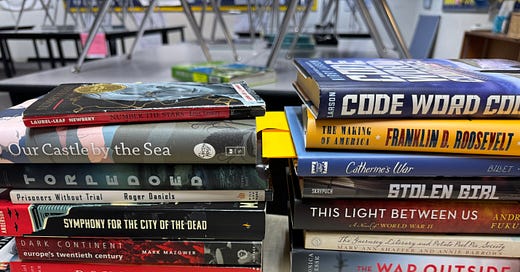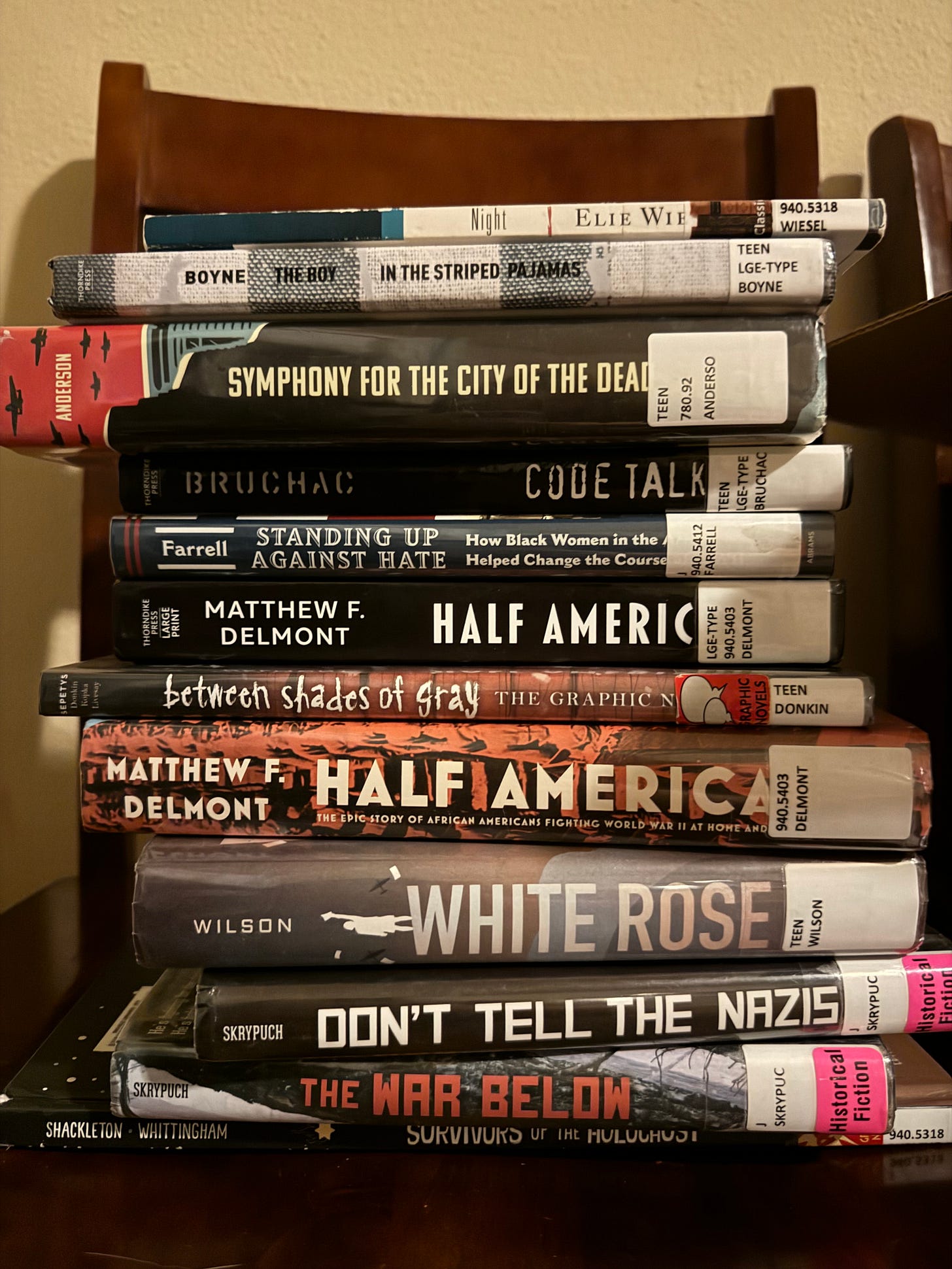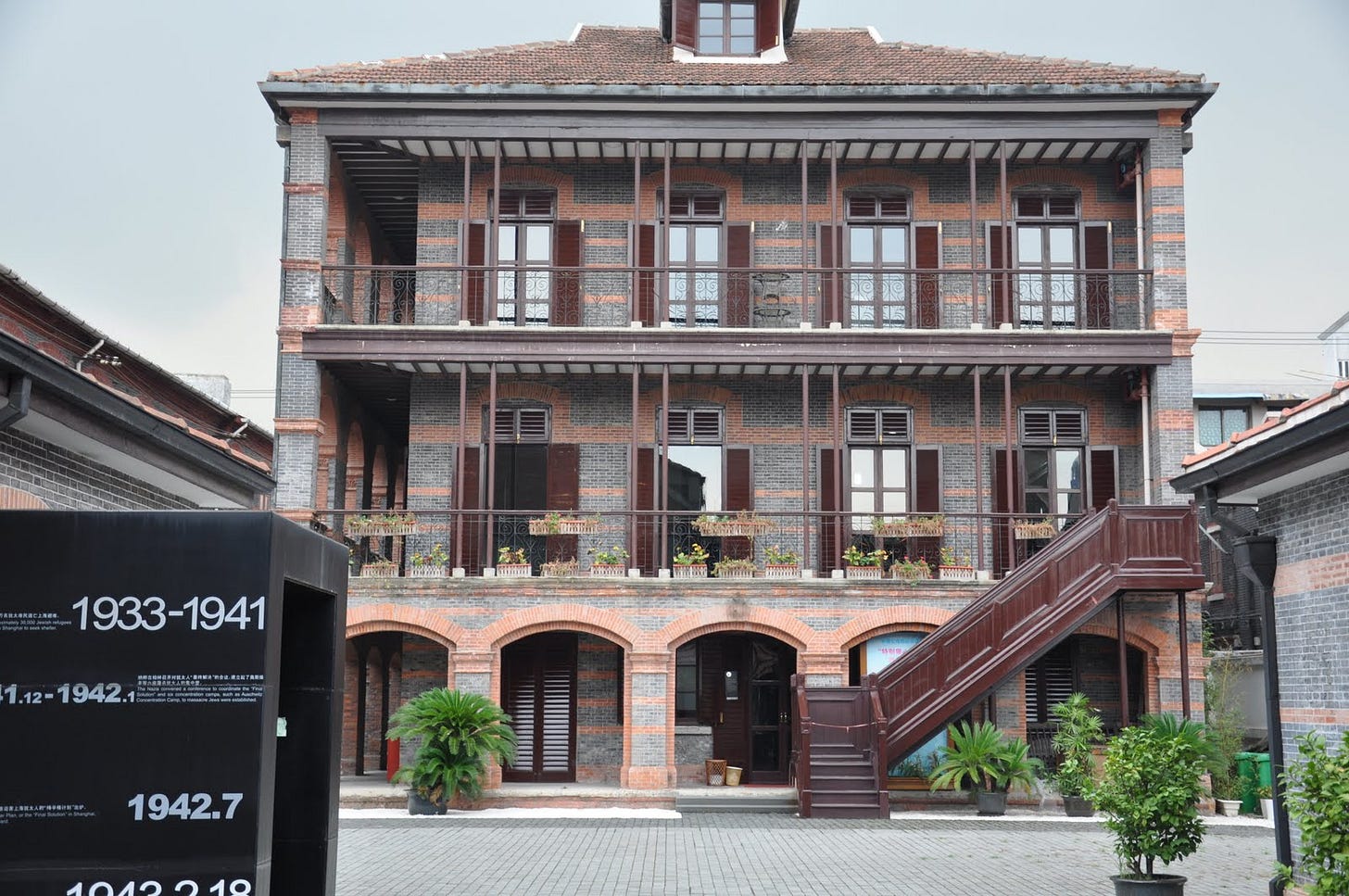A lesson to teach: Speed Dating WWII books. You could call it “book tasting” if you don’t want the dating reference
I love this activity and would do it more often, but rarely are there 30 different kid-friendly books readily available on the topics I teach. I have two books about Polynesian Wayfinding. I have my little pile of six books on the Haitian Revolution. I’m still waiting for ANY picture books on colonialism in Africa (Literary agents! I’ve written one! Represent meeeee!) But with WWII - there are books EVERYWHERE. Seriously, historical fiction authors. You DO know there are other time periods, right?
Book Speed Dating looks like this:
I explain to students that they’ll have five minutes to read a section of each book. In some books, I’ve stick-noted the best scenes. Some books they can pick up and read the first page. Sometimes, perusing the cover and the back flap is all a student can get through in five minutes. That’s fine.
I’ll set a time for five silent minutes of reading.
After the timer goes off, they have two minutes to record the title/author, give a rating, and record a one-sentence summary of what they read on this sheet here.
We do the first round as a class. I read a couple of pages from NUMBER THE STARS and model step #3
Then they are off. They all grab a book, I set a timer, and we have a blissful silent reading sesh. I plop down at a table and read silently right along with them.
Repeat steps #2 and #3 as many times as you can
The next day, I ask what they learned about WWII while they were reading. They compile a list of learnings and share with partners.
For an alternate explanation of book speed dating, check out Write On With Miss. G, right here.
A book to read: Number the Stars by Lois Lowry
I’m such a hypocrite here, recommending NUMBER THE STARS. Usually, I caution teachers against using classic texts just because they liked them as a child. Books published 20+ years ago have outdated language, tropes, and characters. The nostalgia that a teacher feels rarely translates to kids (especially teenagers).
Newer books tend to feature more diversity, include perspectives outside the Euro-centric lens, call upon new historical learning or previously untold stories, and are written in ways that kids today can relate to.
But just this once, I can’t help myself. I just don’t feel like I’ve taught WWII unless I read Lois Lowry’s scene about the Nazis storming into Annemarie’s house and demanding “Where did you get this brown-haired one?”
So I ask/beg my 10th graders if I can read them a book written 40+ years ago for an upper-elementary audience. So far, they’ve never said no.
And y’all, the book holds up. I always read the same scene, I always stop at the cliffhanger (the Nazi’s skepticism that Ellen is indeed Lise, Annemarie’s sister), and the kids always beg me to keep reading.
Later, they’ll all clamor to read it.
YESSS!!! Mission accomplished.
A place to explore: Ohel Moshe Synagogue and Museum, Shanghai
I LOVED this museum! It’s only two rooms plus the synagogue, but I spent more time here than the entire Shanghai Museum.
As the rest of the world was shutting its doors to Jewish immigration during the late 1930s, Shanghai became one of the few places where fleeing Jews could go.
The Chinese explanation is that the Chinese people/government is just that much more caring than the rest of the world. However, I suspect that the lack of visa regulations and laws in Shanghai (which was an international city at the time, mostly controlled by foreign governments) might have a little more do to with it.
Nearly 20,000 Jewish refugees ended up in Shanghai. When the Japanese took over the city, Jews were forced to the district of Hongkou, where crowded and unsanitary conditions led to disease.
While most refugees moved to the USA or back to Europe, the area in Shanghai still holds space for Jews and WWII memories. The museum in Hongkou houses stories and artifacts, and inside the synagogue is a database of the Jewish refugees and a continuously running TV program (one hour long) about some of the Jews that have returned to Shanghai for nostalgic purposes.
Here’s what the New York Times, Travel China Guide, and Conde Nast have to say about the place.
Do y’all have any favorite WWII books?
Besides Number the Stars, I like MT Anderson’s Symphony for the City of the Dead. It’s a historical non-fiction set in Leningrad while Stalin scared the crap out of everyone and then Hitler tried to starve the city out. Meanwhile, Shostakovich wrote a symphony. The book won every award in the world back when it was published in 2015, and deservedly so. It’s an amazing book. I’ve bought about a dozen copies over the years because I keep giving copies to students. I’ll do a whole newsletter on it sometime, but have to mention it here as well.






City of Thieves is a WWII fiction that sticks out in my brain. Can 10th graders read Things Fall Apart because that book shook me. I love the idea of speed dating books in a classroom!!
What a great activity to do with nonfiction picture books! Thanks for sharing.